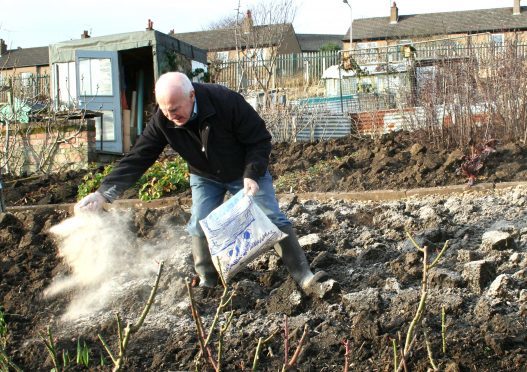Everybody, at some point in their life will have a new garden to sort out or create.
We leave the comfort of home, we get married and find our own home, move location to suit our job or get promoted and move to another town.
Some of us will stay put and inherit property and the garden from our parents.
The garden is now ours, but just where do you begin.
This all depends on whether you are faced with an existing garden or a totally new one around a new house just vacated by the builders.
This new garden gives us a blank canvas with nothing to stop our creativity.
If you have come into an existing garden do not rush to make changes.
Take a year to see what the garden has to offer but keep the grass cut, hedges trimmed and weeds controlled.
During this time analyze the site and note trees, shrubs, hedges, roses, rock garden plants and other features worth retaining as well as marking those that have to be dug out.
Think about paths, walls, patio and fences, garden sheds, ponds and flower borders. Take time to gather all your ideas together and draw up a plan on how best to fit everything in.
Aspects to consider include the following. Do you need a patio in a sheltered sunny spot for relaxation and will this need some degree of privacy.
This is always a good location for scented climbers, tubs and flower beds to create an attractive surrounding.
If you are in an elevated location and subject to winds then shelter is important with hedges, tall shrubs and trees if space allows them, although there are many columnar types suited to the small garden.
The upright flowering cherry, Prunus Amanogawa and the white Eucryphia Rostrevor are very attractive and ideal for small gardens.
Trees are also important to give the garden scale and add specimen plants for impact.
If your garden is on a slope you will need to consider terracing, walls, steps and some cut and fill of some slopes to create flat areas.
Use plants such as dwarf conifers or even London Pride if the slopes are very steep as they reduce maintenance and stabilize the soil.
Areas in the shade can be planted up with Euonymus, heathers, azaleas and variegated ivy if the shade is very dense. Use Pyracantha or Camellias against walls in the shade. Keep sunny areas for the more special plants, bedding plants, herbaceous plants and if drainage is good try some of the exotics such as figs, grape vine Brant and the palm tree, Cordyline australis.
Climbing rose Dublin Bay is brilliant on a sunny south facing wall.
While putting all your ideas together keep in mind the garden impact of flowers and lawns for recreation and tranquility. If you have a young family lawns are essential, but give thought to whether the lawn is to be your challenge to create a bowling green surface mowed with manicured straight lines or just flat and full of dandelions, buttercups and daisies which are much more attractive to the kids.
Now the plan is in place it is time to look at the soil.
Is it clay, sandy, loamy, deep, well drained, devoid of life and full of stones, boulders and builders rubbish.
This is where the hard work begins, clearing up debris, digging over the soil and adding manure, compost or whatever you can find to add organic matter to relieve compaction and put life back into the soil.
If you are not in a hurry you can plant up the garden with potatoes which are great for breaking down heavy soils, then add a green manure such as clover after harvesting.
This will break down the soil further and add nutrients once it is dug in and rots down. You are now ready to order in plants for planting from late autumn till early spring.
Wee jobs to do this week
Cabbages, cauliflower, kale and sprouts all like an alkaline soil rather than acidic, so it is a good idea to grow them all together and add some hydrated lime a couple of months before planting.
As it is normal to rotate crops only lime about a quarter of the vegetable plot and lime another patch the following year.
Potatoes prefer acidic soil otherwise they are liable to get scab, so they come last on the rotation after liming.
















